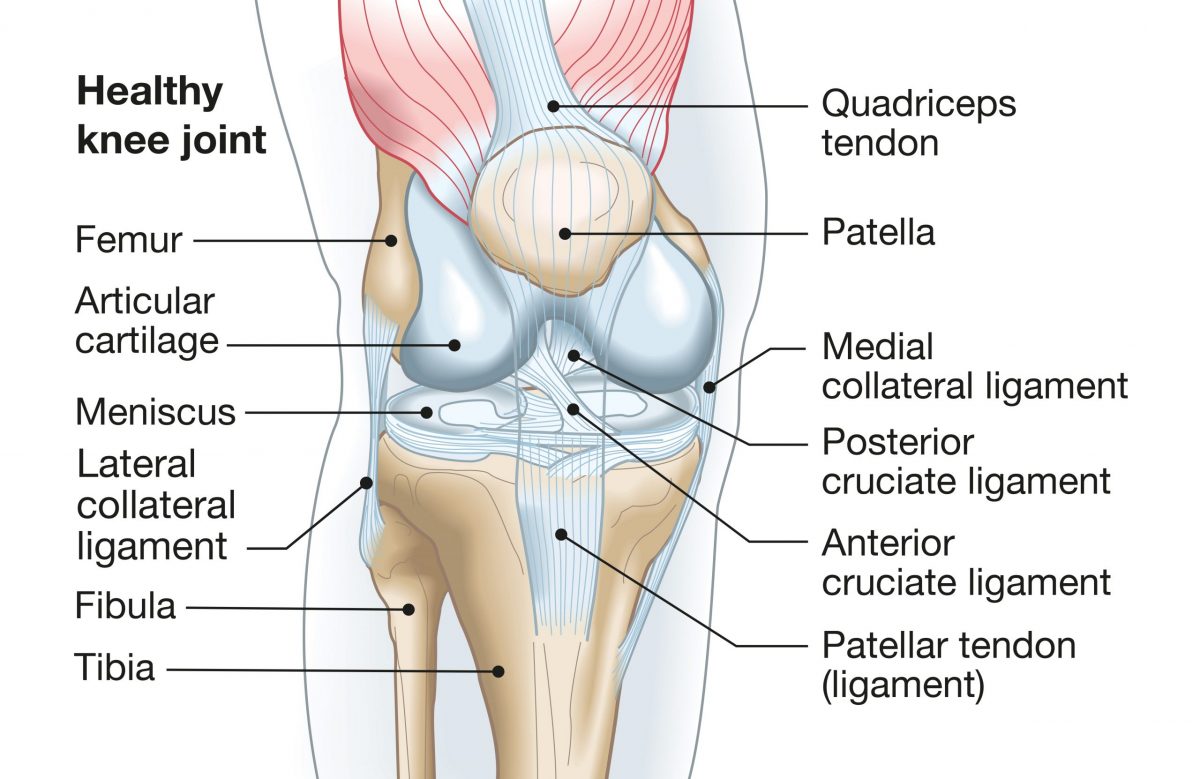The knee is one of the most commonly injured body parts. Knee injuries affect all ages, from young athletes to older adults, and are usually caused by a blow from an outside force, or by twisting the joint incorrectly.
Although any part of the knee can be injured, the damage to the ligaments that give it stability are the most common knee injuries. At EmergeOrtho—Triangle Region, our board-certified, fellowship-trained orthopedic Hip and Knee Physicians specialize in injuries and conditions of the knee and will provide the expert care you need to Emerge Stronger. Healthier. Better.
The Anatomy of the Knee
The complexity of the knee joint makes it vulnerable to a variety of injuries. Not only is it the largest joint, but it also experiences more stress and wear and tear than other joints. To understand common knee injuries, it helps to know the knee parts and how they work together.
The knee joint has five parts: bones, ligaments, articular cartilage, meniscus, and tendons.
Bones: Your femur (thighbone), tibia (leg bone), and patella (kneecap) all meet at the knee joint.
Articular cartilage: A slippery substance that coats the end of your femur and tibia and the back of the kneecap and allows the bones to move smoothly when you bend your knee.
Meniscus: Two wedge-shaped pieces of hard, rubbery cartilage located between the tibia and femur that serve as shock absorbers.
Ligaments: Knees have two collateral ligaments on the sides and two cruciate ligaments inside the joint. Ligaments are similar to ropes and provide stability and support to the joint.
Tendons: Tendons connect the leg muscles to bones.
All parts of the knee are vulnerable to injury or deterioration due to age or overuse. However, ligaments, especially the anterior cruciate ligament (ACL), are the most likely to be injured.
The Women’s Sports Foundation reports about half of all knee injuries are ACL tears, and they represent a significant issue in orthopedic medicine. And, research shows that children and teens are at greater risk for an ACL tear than ever before, with the rate of injuries more than doubling in recent years.
The Most Common Knee Injuries
Orthopedic specialists typically see knee sprains when patients visit for common knee injuries and symptoms. A sprain, regardless of where it occurs in the body, means that a ligament (or ligaments) has been overstretched and possibly torn.
All four ligaments in the knee—ACL, posterior cruciate ligament (PCL), and the medial and lateral ligaments (MCL/LCL)—are vulnerable to injury.
ACL Injuries
The ACL runs diagonally through the center of the knee, giving it stability and keeping the leg bones aligned. ACL injuries are common in sports and may occur when:
- Stopping or slowing suddenly while running.
- Rapidly changing directions while running.
- Colliding with another person, such as in tackle football or soccer.
- Incorrectly landing from a jump.
When the ACL is injured, it is considered a sprain and graded from one to three. A grade one sprain is minor, and the ligament is only slightly stretched but still stable. Grade two sprains are partial tears, and grade three means the entire ligament has torn or separated, and the joint is unstable. Grade three sprains, or torn ACLs, are the most common and often require surgery and an extensive recovery period.
Posterior Cruciate Ligament (PCL) Injuries
The PCL supports the knee by keeping the tibia (leg bone) from moving too far backward. These are not very common injuries and can be subtle and challenging to diagnose. They are typically caused by a direct blow to the front of the knee or hyperextending the ligament.
PCL injuries are also classified as sprains. Unlike ACL injuries, most PCL sprains are partial sprains that heal on their own.
Medial Collateral and Lateral Collateral Ligaments
The collateral ligaments are located on the sides of the knee. Injuries to these ligaments are usually caused by a direct blow that causes the knee to move sideways; for example, a direct hit during football or soccer.
The MCL, which is on the inside of the knee, is more likely to be injured than the LCL. However, LCL injuries are often more severe because the outside of the knee is complex. If the LCL is sprained, it is likely that other parts of the knee are injured as well.
It is possible, but rare, to injure more than one knee ligament at a time. Injuring multiple ligaments can lead to complications like disrupted blood flow and nerve damage.





